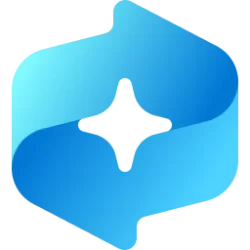Navigation
Install the app
How to install the app on iOS
Follow along with the video below to see how to install our site as a web app on your home screen.
Note: This feature may not be available in some browsers.
More options
Style variation
-
Disable Automatic Windows Updates in Windows 11
This tutorial will show you how to disable Windows Update from automatically downloading and installing updates in Windows 10 and Windows 11.- Brink
- Replies: 17
-
Use ViVeTool to Enable or Disable Hidden Features in Windows 11
This tutorial will show you how to use ViVeTool to enable or disable hidden features in Windows 10 and Windows 11.- Brink
- Replies: 49
-
Restore Classic File Explorer with Ribbon in Windows 11
This tutorial will show you how to restore the classic File Explorer with Ribbon for your account or all users in Windows 11.- Brink
- Replies: 422
-
Create Windows 11 Bootable USB Installation Media
This tutorial will show you how to create a bootable USB flash drive used to install Windows 11 with UEFI support.- Brink
- Replies: 135
-
Uninstall or Reinstall Copilot app
This tutorial will show you different ways to uninstall or reinstall the Copilot app for your account or all users in Windows 10 and Windows 11.- Brink
- Replies: 0
-
Add or Remove "Learn about this picture" Desktop icon
This tutorial will show you how to add or remove the "Learn about this picture" desktop icon when using Windows Spotlight as your desktop background for your account in Windows 11 and Windows 10.- Brink
- Replies: 27
-
Use SFC to Repair System Files in Windows 11
This tutorial will show you how to run the System File Checker (SFC) tool to repair missing, corrupted, and modified system files in Windows 10 and Windows 11.- Brink
- Replies: 25
-
Download Official Windows 11 ISO file from Microsoft
This tutorial will show you how to download an official Windows Server ISO or Windows 11 64-bit or ARM64 ISO file from Microsoft.- Brink
- Replies: 428
-
Repair Install Windows 11 with an In-place Upgrade
This tutorial will show you how to do a repair install of Windows 11 by performing an in-place upgrade without losing anything.- Brink
- Replies: 339
-
Clean Install Windows 11
This tutorial will show you step by step on how to clean install Windows 11 at boot on your PC with or without an Internet connection and setup with a local account or Microsoft account.- Brink
- Replies: 243
You are using an out of date browser. It may not display this or other websites correctly.
You should upgrade or use an alternative browser.
You should upgrade or use an alternative browser.
Tutorials
Windows 11 tutorials, tricks, tips, and guides.
Filters
Show only:
Loading…
This tutorial will show you how to add (pin) or remove (unpin) widgets on the widgets board for your account in Windows 11.
Widgets bring you closer to information you both want and need. Just click on the widgets icon on the Taskbar, swipe from the left using touch, or hit Win + W on your keyboard, and your widgets slide out from the left over your desktop. You can personalize your experience by adding or removing widgets, re-arranging, resizing, and customizing the content. The set of widgets we provide currently focus on your calendar, weather, local traffic, your Microsoft To Do lists, your photos from OneDrive, sports and esports, your stock watchlist, and tips.
Your widgets board consists of two sections: your widgets and your...
This tutorial will show you how to add or remove the "Personalize" desktop context menu for all users in Windows 11.
When you right click or press and hold on your desktop and click/tap on Personalize, it will open the Settings > Personalization settings page.
You must be signed in as an administrator to add or remove the Personalize desktop context menu.
Option One: Add "Personalize" to Desktop context menu
Option Two: Remove "Personalize" from Desktop context menu
EXAMPLE: "Personalize" desktop context menu
Add "Personalize" to Desktop context menu
This is the default setting.
1 Click/tap on the Download button below to download the file below.
Add_Personalize_to_desktop_context_menu.reg...
This tutorial will show you how to turn on or off screen rotation lock in Windows 11.
A tablet and some hybrid laptop (ex: 2-in-1) devices are designed to rotate the built-in display automatically in a portrait or landscape orientation as you turn it so that what you see on the screen is always right side up.
If you like, you can turn on or off rotation lock in Windows 11 to allow (off) or prevent (on) the auto-rotation of your screen as needed.
Display orientation settings will be disabled and grayed out when Rotate lock is turned off.
Option One: Turn On or Off Screen Rotation Lock using Keyboard Shortcut
Option Two: Turn On or Off Screen Rotation Lock in Quick Settings
Option Three: Turn On or Off Screen Rotation Lock in...
This tutorial will show you how to pin or unpin an app, drive, file, folder, library, or web site to Start for your account in Windows 11.
The Start menu is comprised of three sections: Pinned, All apps, and Recommended.
The Start menu contains shortcuts of all your apps, settings, and files.
The section at the top of the Start menu is called the Pinned section. This section consists of pins arranged in a grid. The items in this section are a subset of all the apps installed on the PC; not all installed apps are included in this section by default. The number of rows and items in this view are consistent across device panel sizes.
While the initial view of this section displays 18 items, a user can use the pagination control to move...
This tutorial will show you how to add "Close All Apps" to the desktop context menu for all users in Windows 10 and Windows 11.
Sometimes you may need or want to quickly close all open apps at once instead of one at a time without shutting down or restarting the computer.
While you must be signed in as an administrator to add or remove the "Close All Apps" context menu, all users can use the context menu if added.
The Close All Apps context menu will forcefully close all open apps except File Explorer and Registry Editor, so be sure to save anything open in an app before using the context menu.
EXAMPLE: "Close All Apps" context menu
In Windows 11, you will need to click/tap on Show more options first by default, then click/tap on...
This tutorial will show you how to show the profile icon on either the title bar or toolbar in Microsoft Edge for your account in Windows 10 and Windows 11.
The Microsoft Edge web browser is based on Chromium and was released on January 15, 2020. It is compatible with all supported versions of Windows, and macOS. With speed, performance, best in class compatibility for websites and extensions, and built-in privacy and security features.
Microsoft Edge currently show the profile icon on the title bar by default.
You can change to show the profile icon on either the title bar or toolbar in Microsoft Edge.
Option One: Show Profile Icon on Title Bar or Toolbar in Microsoft Edge Settings
Option Two: Show Profile Icon on Title Bar or...
This tutorial will show you how to add or remove the "Display settings" desktop context menu for all users in Windows 11.
When you right click or press and hold on your desktop and click/tap on Display settings, it will open the Settings > System > Display settings page.
You must be signed in as an administrator to add or remove the Display settings desktop context menu.
Option One: Add "Display settings" to Desktop context menu
Option Two: Remove "Display settings" from Desktop context menu
EXAMPLE: "Display settings" desktop context menu
Add "Display settings" to Desktop context menu
This is the default setting.
1 Click/tap on the Download button below to download the file below...
This tutorial will how you to add or remove common desktop icons for your account in Windows 11.
The desktop (Win+D) is your home screen and working space in Windows that contains the taskbar and any icons (ex: shortcuts, files, folders, etc...) you add to and arrange on the desktop.
Windows includes the common This PC (aka: Computer), User's Files, Network, Recycle Bin, and Control Panel shortcuts that you can add or remove as icons on your desktop.
Reference:
https://support.microsoft.com/en-us/windows/show-desktop-icons-in-windows-c13270f0-3812-c71d-f27e-29aa32588b20
Option One: Add or Remove Desktop Icons in Desktop Icon Settings
Option Two: Add or Remove Desktop Icons using REG file
EXAMPLE: desktop icons
Add or...
This tutorial will show you how to turn on or off voice shortcuts for custom commands to use in voice access for your account in Windows 11.
Voice access is a new experience starting with Windows 11 build 22518 that enables everyone, including people with mobility disabilities, to control their PC and author text using only their voice and without an internet connection. For example, you can open and switch between apps, browse the web, and read and author email using your voice.
Starting with Windows 11 build 22635.2915 (Beta), build 23612 (Dev), and build 26020 (Canary), Microsoft is introducing voice shortcuts or custom commands to enable you to create your very own command. This is currently available if you use voice access in...
This tutorial will show you how to delete voice shortcuts for custom commands to use in voice access for your account in Windows 11.
Voice access is a new experience starting with Windows 11 build 22518 that enables everyone, including people with mobility disabilities, to control their PC and author text using only their voice and without an internet connection. For example, you can open and switch between apps, browse the web, and read and author email using your voice.
Starting with Windows 11 build 22635.2915 (Beta), build 23612 (Dev), and build 26020 (Canary), Microsoft is introducing voice shortcuts or custom commands to enable you to create your very own command. This is currently available if you use voice access in English...
This tutorial will show you how to create voice shortcuts for custom commands to use in voice access for your account in Windows 11.
Voice access is a new experience starting with Windows 11 build 22518 that enables everyone, including people with mobility disabilities, to control their PC and author text using only their voice and without an internet connection. For example, you can open and switch between apps, browse the web, and read and author email using your voice.
Starting with Windows 11 build 22631.3374, Microsoft is introducing voice shortcuts or custom commands to enable you to create your very own command. This is currently available if you use voice access in English.
You can create commands that map to a single action...
Latest Tutorials
-
-
Browsers and Mail Enable or Disable Extensions from Other Stores in Microsoft Edge on Windows 11
- Started by Brink
- Replies: 0
-
-
-
-
Browsers and Mail Enable or Disable Extension Developer Mode in Microsoft Edge on Windows 11
- Started by Brink
- Replies: 0
-
Browsers and Mail Pin or Unpin Extensions on Toolbar in Microsoft Edge on Windows 11
- Started by Brink
- Replies: 4
-
Browsers and Mail Enable or Disable Extensions in Microsoft Edge InPrivate Browsing on Windows 11
- Started by Brink
- Replies: 0
-
-
Browsers and Mail Enable or Disable Extensions in Microsoft Edge on Windows 11
- Started by Brink
- Replies: 0
Tutorial Tags
android
background
battery
bitlocker
bluetooth
boot
color
context menu
copilot
defender
desktop
display
drive
edge
file explorer
folder
hyper-v
icon
keyboard
location
mouse
notepad
notifications
onedrive
outlook
paint
pen
photos
pointer
power
printer
recall
screenshot
search
settings
share
shortcuts
sign-in
sound
start menu
store
taskbar
terminal
theme
touch
usb
voice
wi-fi
widgets
xbox




















